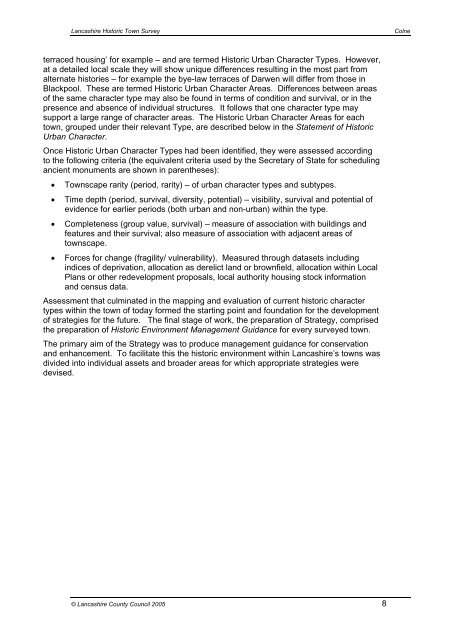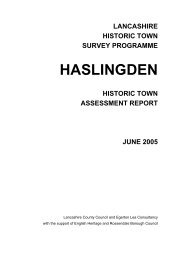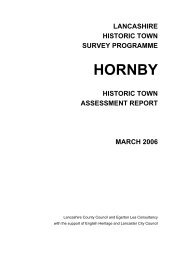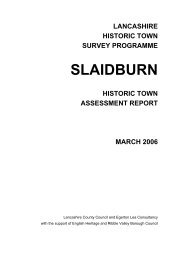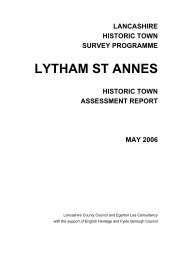Colne - Lancashire County Council
Colne - Lancashire County Council
Colne - Lancashire County Council
Create successful ePaper yourself
Turn your PDF publications into a flip-book with our unique Google optimized e-Paper software.
<strong>Lancashire</strong> Historic Town Survey<strong>Colne</strong>terraced housing’ for example – and are termed Historic Urban Character Types. However,at a detailed local scale they will show unique differences resulting in the most part fromalternate histories – for example the bye-law terraces of Darwen will differ from those inBlackpool. These are termed Historic Urban Character Areas. Differences between areasof the same character type may also be found in terms of condition and survival, or in thepresence and absence of individual structures. It follows that one character type maysupport a large range of character areas. The Historic Urban Character Areas for eachtown, grouped under their relevant Type, are described below in the Statement of HistoricUrban Character.Once Historic Urban Character Types had been identified, they were assessed accordingto the following criteria (the equivalent criteria used by the Secretary of State for schedulingancient monuments are shown in parentheses):• Townscape rarity (period, rarity) – of urban character types and subtypes.• Time depth (period, survival, diversity, potential) – visibility, survival and potential ofevidence for earlier periods (both urban and non-urban) within the type.• Completeness (group value, survival) – measure of association with buildings andfeatures and their survival; also measure of association with adjacent areas oftownscape.• Forces for change (fragility/ vulnerability). Measured through datasets includingindices of deprivation, allocation as derelict land or brownfield, allocation within LocalPlans or other redevelopment proposals, local authority housing stock informationand census data.Assessment that culminated in the mapping and evaluation of current historic charactertypes within the town of today formed the starting point and foundation for the developmentof strategies for the future. The final stage of work, the preparation of Strategy, comprisedthe preparation of Historic Environment Management Guidance for every surveyed town.The primary aim of the Strategy was to produce management guidance for conservationand enhancement. To facilitate this the historic environment within <strong>Lancashire</strong>’s towns wasdivided into individual assets and broader areas for which appropriate strategies weredevised.© <strong>Lancashire</strong> <strong>County</strong> <strong>Council</strong> 2005 8


